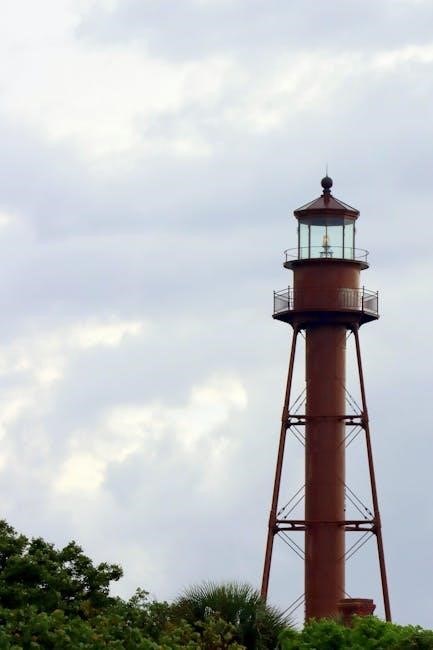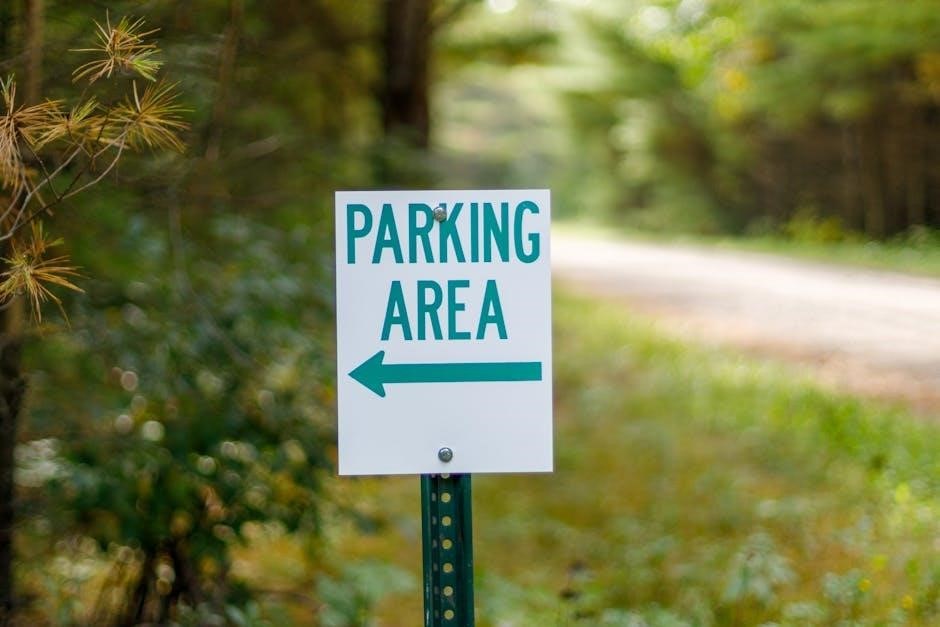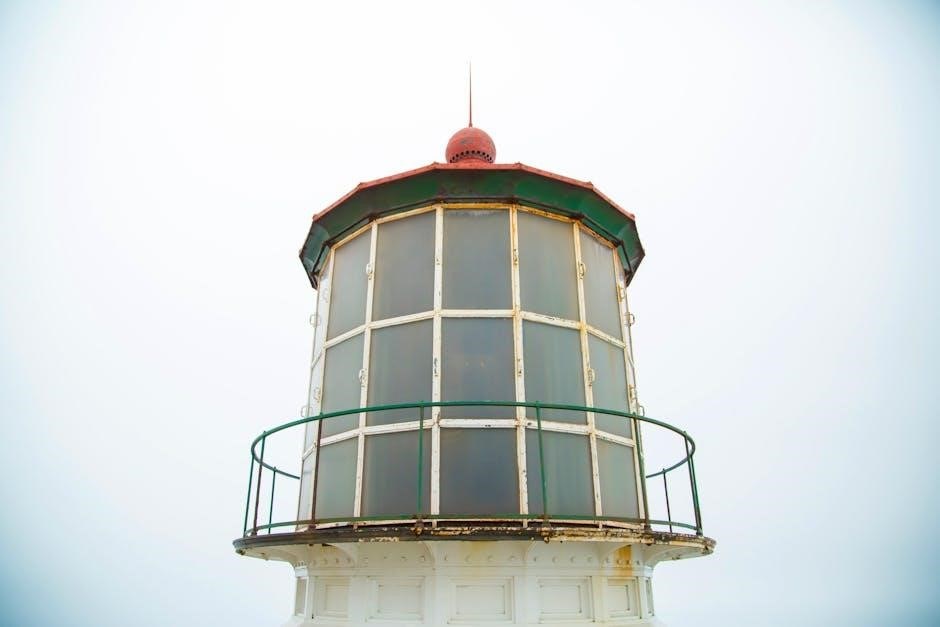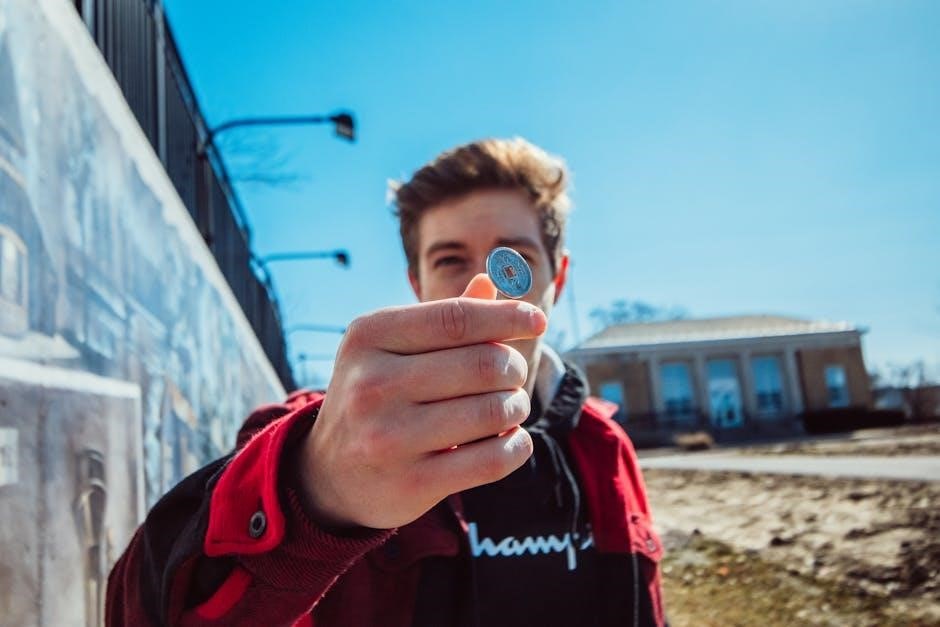us error coin guide 2024
Welcome to the 2024 guide on U.S. error coins, a fascinating niche for collectors and enthusiasts. Discover unique minting mistakes, learn identification techniques, and explore their collector value.
What Are Error Coins?
Error coins are unique numismatic treasures resulting from minting mistakes. They occur when coins are misprinted, such as off-center strikes or double strikes. These anomalies make each error coin distinct. Examples include blank planchet errors, where no design is present, or misprinted dates. Error coins captivate collectors due to their rarity and historical significance. Understanding their types and causes enhances appreciation for these fascinating pieces. They often hold significant value, especially when authenticated and graded.
Types of Error Coins
Error coins come in various forms, including off-center strikes, double-struck coins, and blank planchet errors. Each type offers a unique glimpse into minting mishaps.
Off-Center Errors

Off-center errors occur when a coin is struck with the die misaligned, resulting in part of the design missing. These errors are highly collectible and vary in severity. Minor misalignments can be subtle, while significant shifts may leave portions of the design absent. Off-center coins are popular among enthusiasts due to their unique appearance and the storytelling behind their creation. Proper authentication is essential to verify their legitimacy and value.

Double Struck Coins
Double struck coins are created when a coin is struck twice by the minting die, causing overlapping designs. This error often results in a distorted or layered appearance. These coins are highly sought after by collectors due to their unique visual appeal. The double striking can occur with the same die or different ones, adding to the coin’s rarity and value. Authentication is crucial to ensure the error is genuine and not post-mint damage.
![]()
Blank Planchet Errors
Blank planchet errors occur when an unstruck coin blank is accidentally released from the mint. These planchets lack any design or mint marks, appearing as plain metal discs. They are rare and highly collectible, offering a glimpse into the minting process. Collectors appreciate their simplicity and historical significance, making them valuable additions to error coin collections. Authentication ensures they are genuine mint errors rather than damaged or altered coins.
How to Identify Error Coins
Identifying error coins requires examining mint marks, die cracks, and irregularities. Use magnification to spot misaligned dies or misprinted dates, ensuring authenticity and value determination.
Examination Techniques
Examination techniques for error coins involve using magnification tools to inspect details like misaligned dies, off-center strikes, or planchet flaws. Professionals recommend a 5x to 10x loupe or microscope to identify subtle errors. Pay attention to unusual marks, irregular edges, or doubling on lettering or numerals. Proper lighting is essential to reveal imperfections that might otherwise go unnoticed. Always handle coins gently to avoid additional damage during the examination process.

Authentication Process
The authentication process for error coins involves verifying their legitimacy through detailed inspection and expert evaluation. Third-party grading services like PCGS and NGC employ specialists to examine coins for genuine errors, distinguishing them from counterfeit or altered pieces. This process ensures the coin’s authenticity and error type, providing a trusted certification that enhances its value and marketability for collectors and sellers alike.
Determining the Value of Error Coins
The value of error coins is determined by their rarity, condition, and demand. Factors like the type and severity of the error, as well as market trends, influence their worth.
Factors Influencing Value
The value of error coins is shaped by several key factors. Rarity plays a significant role, as some errors are exceedingly rare. The condition of the coin is also crucial, with well-preserved examples commanding higher prices. Additionally, the type and severity of the error influence value, as certain mistakes are more sought after by collectors. Market demand and trends also fluctuate, affecting the overall worth of these unique coins.
Market Demand and Rarity
Market demand significantly impacts the value of error coins, with rare types like off-center and double-struck coins being highly sought after. The scarcity of certain errors drives up prices, as collectors compete for unique additions to their collections. Trends in the market also influence demand, with some errors gaining popularity over time. Rarity, therefore, is a critical factor in determining both desirability and value in the error coin market.

A Collector’s Guide to Buying and Selling Error Coins
This guide provides insights for collectors on purchasing and selling error coins, emphasizing market trends, authentication, and strategies to maximize value while avoiding scams.
Where to Buy Error Coins
Error coins can be found through reputable auction houses, specialized coin dealers, and online marketplaces. Auction platforms like Heritage Auctions and eBay often feature rare error coins. Additionally, coin shows and numismatic clubs provide opportunities to discover unique pieces. Collectors should ensure they purchase from trusted sources to avoid counterfeits. Authentication certificates from grading services like PCGS or NGC are highly recommended to verify legitimacy and value.
Best Practices for Selling
When selling error coins, obtain authentication from grading services like PCGS or NGC to ensure credibility. Research market trends and set competitive prices. Consider working with reputable auction houses or dealers who specialize in error coins. Provide clear, high-quality images and detailed descriptions. Avoid rush sales and be transparent about the coin’s history and condition. This approach builds trust and maximizes the sale value of your unique numismatic items.

Submitting Coins to Grading Services
Grading services like PCGS and NGC provide expert evaluation of error coins, ensuring authenticity and condition. This process enhances value and credibility for collectors.
Choosing the Right Service
When selecting a grading service for error coins, consider reputation, expertise, and services offered. PCGS and NGC are top choices, known for detailed evaluations. Ensure the service specializes in error coins to get accurate assessments. Check reviews and ask for recommendations. Transparency in grading standards is key to maintaining trust and ensuring fair evaluations for your unique coins. Research thoroughly to find the best fit for your needs.
Understanding Grading Standards
Grading standards for error coins focus on defect severity, rarity, and visual appeal. Services like PCGS and NGC use detailed scales to assess condition; Mint errors are evaluated based on uniqueness and production flaws. Graders consider factors like misalignment, double strikes, or planchet defects. Higher grades often correlate with greater value. Documentation and consistency in standards ensure fair evaluations, helping collectors and sellers determine accurate market worth for these unique coins.

Avoiding Scams and Counterfeits
Protect yourself from fraudulent activities by verifying authenticity through reputable grading services. Stay vigilant for misleading listings and overpriced items to ensure safe transactions.
When evaluating error coins, watch for inconsistent pricing, low-quality images, and vague descriptions. Sellers demanding immediate payments or refusing third-party authentication should raise suspicions. Be cautious of overly aggressive sales tactics or claims of rarity without proper documentation. Always verify the seller’s reputation and ensure the coin is graded by a trusted service; Avoid deals that seem too good to be true, as they often indicate counterfeit or misrepresented items. Authenticating error coins requires a meticulous process. Submit coins to reputable grading services like PCGS or NGC for expert verification. Look for official certification and detailed reports. Use magnification to examine die cracks, misalignments, or planchet flaws. Cross-reference with known examples and consult trusted numismatists. Avoid ungraded coins from unreliable sources, as they may be counterfeit or altered. Authentication ensures both the coin’s legitimacy and its value in the market. The 2024 market for U.S. error coins shows increasing demand, driven by rare finds like off-center cents and double-struck coins, attracting both seasoned collectors and new enthusiasts. In 2024, emerging trends in U.S. error coins include a surge in digital marketplaces and social media platforms driving collectible coin sales. Collectors are increasingly seeking rare error coins like off-center strikes and double-struck pieces, which are gaining popularity due to their unique stories and historical significance. Additionally, there is a growing interest in modern error coins, particularly those from recent minting years, as they become more accessible to new collectors. This shift is also influenced by advancements in authentication technologies, making it easier for enthusiasts to verify the legitimacy of their finds. As a result, the market for error coins is becoming more dynamic and inclusive, attracting a broader range of buyers and sellers. The future of U.S. error coins looks promising, driven by technological advancements and increased collector interest. As grading services improve, more enthusiasts are expected to enter the market, boosting demand for rare and unique error coins. Additionally, the rise of online platforms will make it easier for collectors to buy, sell, and trade error coins, further fueling growth. This trend suggests a bright and dynamic future for error coin collecting. Explore iconic U.S. error coins, such as the 1943 Copper Cent and the 1955 Doubled Die Penny, highlighting their historical significance and collector appeal. Error coins like the 1943 Copper Cent and 1955 Doubled Die Penny hold lasting historical value, marking rare minting mistakes during pivotal eras. These coins reflect production challenges and technological advancements, offering insights into the evolution of U.S. currency. Their uniqueness captivates collectors, blending numismatic interest with a glimpse into America’s monetary past. Such errors are not just anomalies but pieces of history cherished for their rarity and storytelling potential.
Recent finds like the 2019 “W” Minted Quarter and 2021 Silver Eagle Error Coins highlight ongoing minting anomalies, captivating modern collectors. Advanced detection methods and grading services have increased the visibility of these rare pieces, making them highly sought after. Each discovery underscores the enduring allure of error coins in contemporary numismatics, blending historical significance with modern intrigue. Collectors continue to eagerly pursue these unique treasures, fueling the market’s dynamic growth. Exploring U.S. error coins offers a unique journey through numismatic history, blending intriguing stories with valuable insights. Whether you’re a seasoned collector or a curious newcomer, understanding these rare anomalies enhances your appreciation for the craftsmanship and complexity of coin minting. By staying informed, embracing best practices, and adapting to market trends, enthusiasts can continue to find joy and success in collecting these fascinating pieces. Happy collecting!Recognizing Red Flags
Verifying Authenticity
Current Market Trends in 2024
Emerging Trends

Future Outlook

Notable Examples of US Error Coins
Historical Significance
Modern Discoveries
